ISSN ONLINE(2319-8753)PRINT(2347-6710)
ISSN ONLINE(2319-8753)PRINT(2347-6710)
Vikas.R.Rajoria 1, Prof.P.K.Jadhao2
|
| Related article at Pubmed, Scholar Google |
Visit for more related articles at International Journal of Innovative Research in Science, Engineering and Technology
Injection moulding machine is the most commonly used manufacturing process for the fabrication of plastic parts. The plastic being melted in injection molding machine and then injected into the mould. The barrel contains reciprocating screw for injecting the material into the mould and the material is also melted into the barrel. This project deals with, the solution of problem occurred for reciprocating screw of Injection molding machine. It identifies and solves the problem by using the modeling and analysis techniques. The problem occurred in the reciprocating screw of machine which is wearing of threads due to affect of temperature of mold materials (flow materials) i.e. Nylon, low density polypropylene, polystyrene, PVC etc., The main work was to model the components of machine with dimensions, and perform thermal analysis with modeled component.
Keywords |
| Reciprocating Screw, Barrel, and mould. |
INTRODUCTION |
| The Prime purpose of the injection moulding machine is to plasticize (that is heat-soften) the moulding material so that the resultant heat- softened mass can be injected into and formed by the mould. Arguably, therefore, the injection unit is the most important part of the machine. If this portion of the machine is in anyway inefficient, then the efficiency of the whole process is affected.Most injection moulding materials are based on thermoplastics such as polystyrene and polyethylene. These materials are solid at room temperature and in order to produce a shape able melt their temperature must be raised by approximately 200°C. Nowadays this is most commonly done by using an in-line injection unit. Such a unit contains a single screw and this may be driven around (to heat soften the material and to feed the barrel) and also driven forward (to transport the material into the mould).Because of their widespread use the technology of such units dominates the injection moulding industry. Generally speaking, injection mouldings are required in very large numbers – that is, many thousands or millions .Products commonly seen around the home include buckets, bowls and brushes. These products are relatively inexpensive although they are produced on equipment which is expensive and they are produced from materials which are also expensive. The products are inexpensive because they are mass produced quickly, to within specified tolerances, on equipment which may be highly automated.Plastic injection moulding system is illustrated below for experimentation |
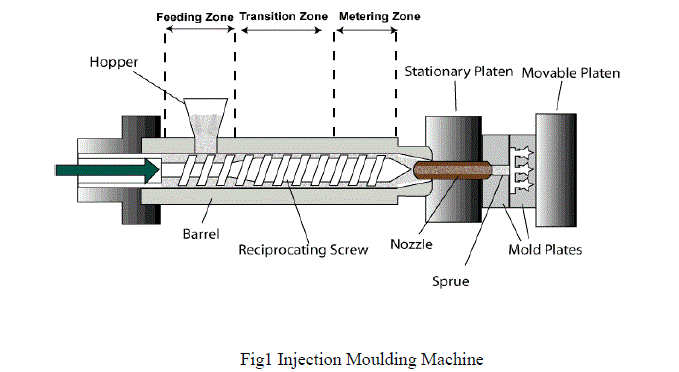 |
| Injection moulding is a manufacturing process for producing parts by injecting material into a mould. Injection moulding can be performed with a host of materials, including metals, glasses, elastomers confections, and most commonly thermoplastic and thermosetting polymers. Material for the part is fed into a heated barrel, mixed and forced into a mould cavity where it cools and hardens to the configuration of the cavity. Injection moulding, machine is the most commonly used manufacturing process for the fabrication of plastic parts. A wide variety of products are manufactured using injection moulding machine, such as plastics housings, consumer electronics, medical devices including valves and syringes which vary greatly in their size, complexity and application .The injection moulding process requires the use of an injection moulding machine, raw plastic parts, material, and a mould. The plastic is melted in the injection moulding machine and then injected into the mould, where it cools and solidifies into the final part. The barrel contains the mechanism for heating and injecting the material into the mould. This mechanism is usually a reciprocating screw. A reciprocating screw advance the material forward by either hydraulic or electric motor. During this process the material is melted by heat. The material enters the grooves of the screw. The screw completes the shot volume &returns to reverse position. Wearing of threads is the problem occurring in the reciprocating screw due to effect of high melting temperature and pressure of mould materials. Industries are having a temporary solution to make repair of threads on Lathe machine. This reduces weight and strength of screw resulting in misalignment in the assembly. The screw is the most crucial part of a machine. The material for screw is SAE 52100; other alternate materials used are SAE4340, SAE4040, and SAE1040. |
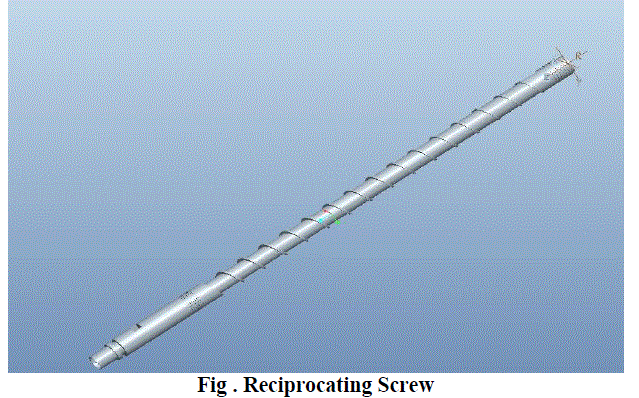 |
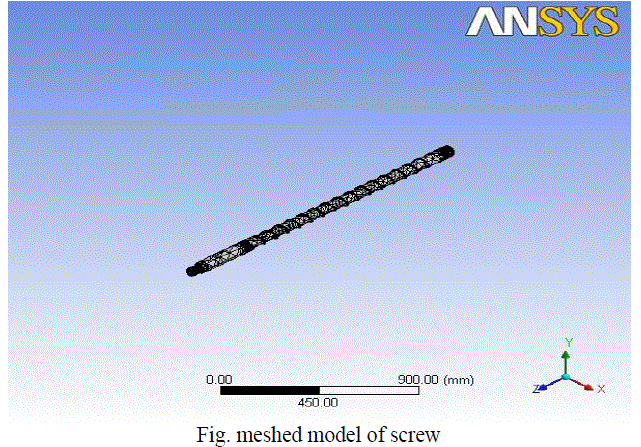 |
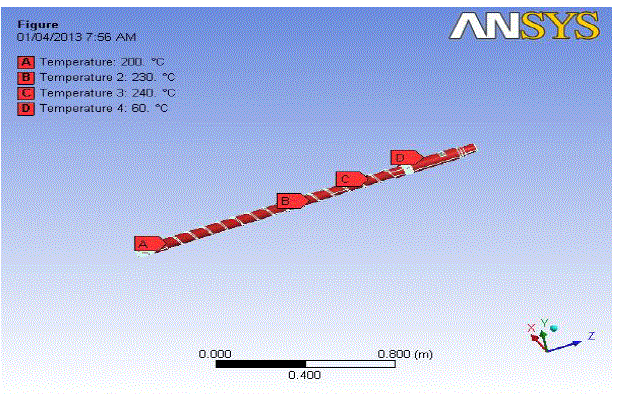 |
Fig 6.7 Model > Transient Thermal > Figure (temperature at different zones) |
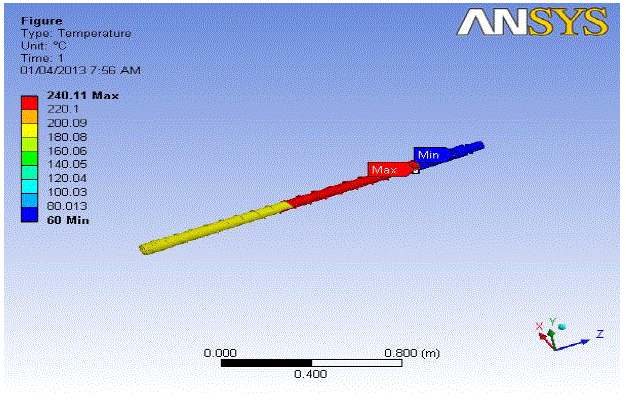 |
Fig Model > Transient Thermal > Solution > Temperature > Figure |
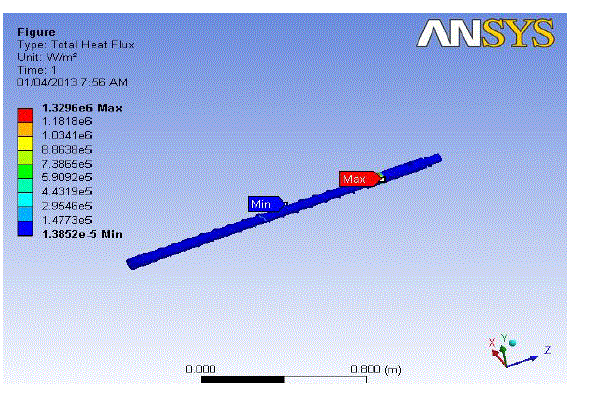 |
Fig Model > Transient Thermal > Solution > Total Heat Flux > Figure |
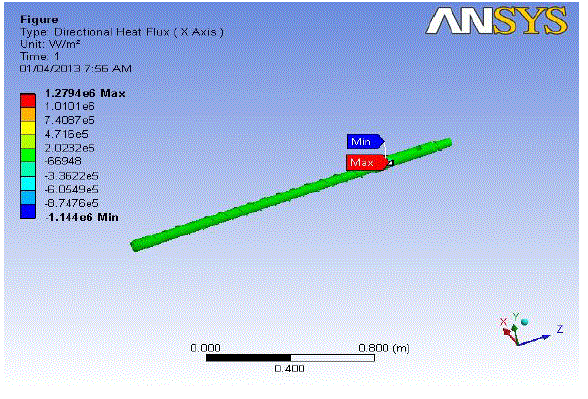 |
Fig Model > Transient Thermal > Solution > Directional Heat Flux > Figure |
ïÃâ÷ Input Parameters For Finite Element Analysis Of Screw Using ANSYS11.0 |
 |
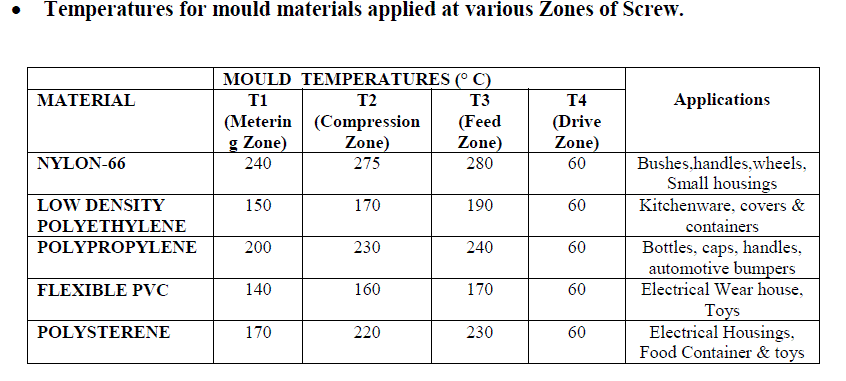 |
II. EXPERIMENTAL RESULTS |
| ïÃâ÷ Results Using Screw Material And Mould Material. |
| ïÃâ÷ Table 6.7.1 Result using screw material SAE 52100. |
 |
| ïÃâ÷ Result using screw material SAE 4340. |
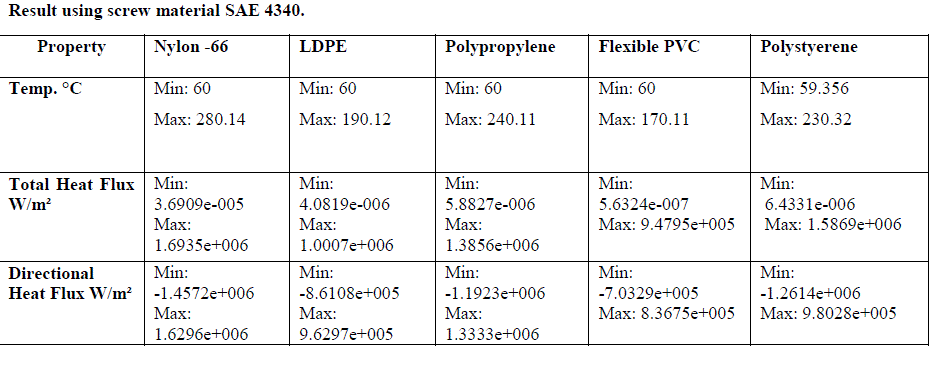 |
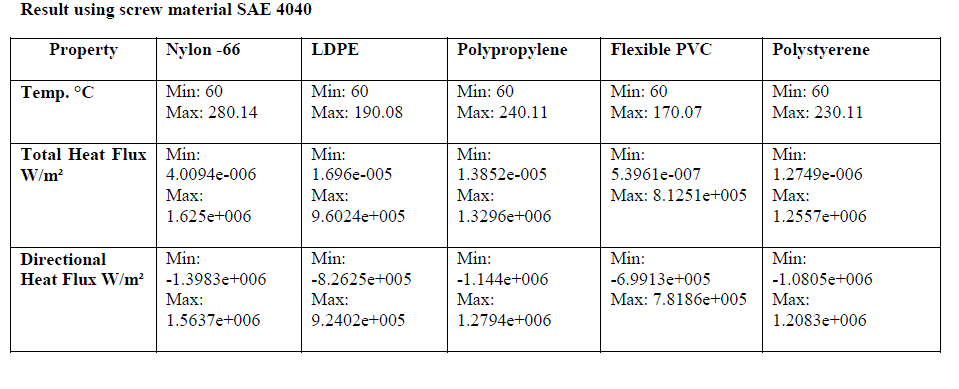 |
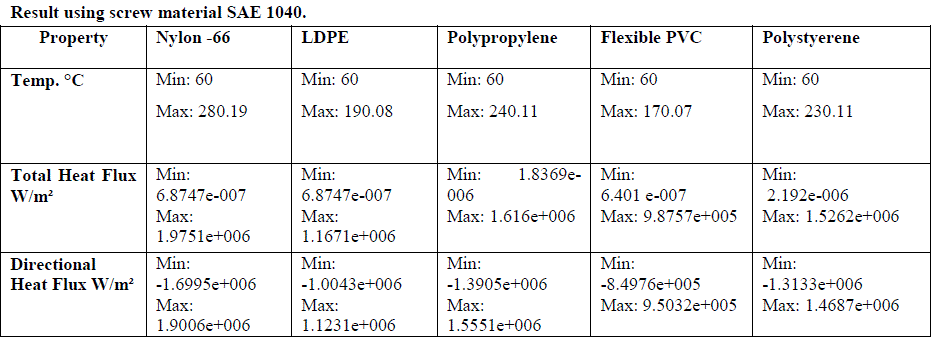 |
III. CONCLUSION |
| Among all the steel Grades SAE 4040 (EN 8) is the most suitable material for processing of the mould materials as it exhibits the minimum heat flux generated while processing. Also the values of heat flux for SAE 4340 and SAE 4040 are approximately very close but the yield tensile strength values are: |
| FOR SAE 4340: 470×10^6 Pa. |
| FOR SAE 4040: 350×10^6 Pa. |
| Clearly SAE 4340 will resist more to pressure compared to SAE4040 so the Steel grade suggested for Injection moulding machine is SAE 4340. |
References |
|